- Battery Manufacturing Equipment
- Battery Laboratory Assembly Equipment
- Battery Pack Assembly Equipment
- Sodium Ion Battery Manufacturing Equipment
- Solid State Cell Production Line
- Dry Electrode Assembly Equipment
- Supercapacitor Assembly Equipment
- Perovskite Solar Cell Lab Equipment
- Li ion Battery Materials
- Ni / Al / Cu Metal Foam
- Customized Electrode
- Cathode Active Materials
- Anode Active Materials
- Coin Cell Parts
- Lithium Chip
- Cylindrical Cell Parts
- Battery Current Collectors
- Battery Conductive Materials
- Electrolyte
- Battery Binder
- Separator and Tape
- Aluminum Laminate Film
- Nickel Strip/Foil
- Battery Tabs
- Graphene Materials
- Cu / Al / Ni / Stainless steel Foil
- Battery Laboratory Equipment
- Li ion Battery Tester
- Battery Safety Tester
- Material Characterization Tester
- Rolling Press Machine
- Electrode Mixer
- Coin Cell Crimping Machine
- Coin Cell Electrode Disc Punching
- Pouch Cell Sealing Machine
- Pouch Cell Stacking Machine
- Pouch Cell Forming Machine
- Pouch Cell Ultrasonic Welder
- Pouch Cell Electrode Die Cutter
- Cylinder Cell Sealing Machine
- Cylinder Cell Grooving Machine
- Electrode Slitting Machine
- Cylinder Cell Winding Machine
- Cylinder Cell Spot Welding Machine
- Electrolyte Filling
- Type Test Cell
- Other Battery Making Machine
- NMP Solvent Treatment System
- Vacuum Glove Box
- Coating Machine
- Lab Furnaces
- Ball Mill
- Laboratory Press
- Laboratory Equipment
- Press Equipment
- 2023-06-08
Introduction:
The global demand for cylindrical cells has skyrocketed in recent years, fueled by the rapid growth of the electric vehicle and energy storage industries. To meet this increasing demand and drive the sustainable energy revolution, the establishment of a state-of-the-art cylindrical cell manufacturing plant is imperative. In this blog post, we will explore the key considerations and advantages of building a cylindrical cell manufacturing plant that will shape the future of energy storage.
Technological Innovation:
At the heart of a cylindrical cell manufacturing plant lies cutting-edge technology that enables efficient and precise production processes. Advanced machinery and automation systems streamline cell assembly, electrode coating, and cell formation, ensuring consistent quality and optimized production yields. By embracing the latest innovations, a manufacturing plant can stay ahead of the curve and meet the evolving needs of the market.
Scalability and Production Capacity:
A cylindrical cell manufacturing plant should be designed with scalability in mind. Flexibility in production capacity is crucial to adapt to fluctuating market demands and accommodate future growth. By implementing modular designs and flexible manufacturing layouts, the plant can efficiently scale production output while maintaining cost-effectiveness and resource optimization.
Quality Control and Safety Measures:
Maintaining stringent quality control measures is paramount in a cylindrical cell manufacturing plant. Rigorous testing protocols and comprehensive quality assurance systems must be in place to ensure consistent cell performance and reliability. Moreover, a robust safety framework that aligns with industry standards and regulations should be implemented to safeguard workers and maintain a secure production environment.
Research and Development Focus:
To stay at the forefront of the cylindrical cell manufacturing industry, an ongoing commitment to research and development is vital. Continuous improvement in cell design, materials, and manufacturing processes can lead to higher energy densities, longer lifespans, and improved safety features. By fostering collaborations with academic institutions, industry partners, and research organizations, a manufacturing plant can drive innovation and contribute to technological advancements.
Sustainability and Environmental Responsibility:
Building a cylindrical cell manufacturing plant with a focus on sustainability is key to supporting the global shift towards clean energy. Utilizing renewable energy sources, implementing energy-efficient systems, and adopting responsible waste management practices can minimize the environmental impact. Additionally, the use of eco-friendly materials and the development of recycling initiatives for end-of-life cells contribute to a circular economy and reduce resource depletion.
Job Creation and Economic Impact:
The establishment of a cylindrical cell manufacturing plant brings significant job creation opportunities and economic growth. The plant will provide employment across various skill levels, from technicians and engineers to administrative and support staff. Furthermore, the local supply chain and related industries will benefit from increased business opportunities and contribute to regional development.
In the construction of a cylindrical cell manufacturing plant, here are some important processes and equipment:
-
Material Preparation and Handling:
- Material storage and management system: for storing and managing materials such as positive and negative electrodes, electrolytes, etc.
- Material mixing and preparation equipment: for blending and preparing electrode slurries, electrolytes, etc., such as mixers, ball mills, etc.
-
Electrode Preparation:
- Positive and negative electrode coating machine: for uniformly coating electrode slurries onto electrode foils, ensuring consistency and density of the materials.
- electrode Winding machine: for winding positive and negative electrode foils into electrode assemblies, forming the internal structure of the battery.
-
Battery Assembly:
- Battery assembly equipment: including automated assembly lines for assembling electrode assemblies, separators, and electrolytes into complete battery cells.
- Battery formation equipment: for conditioning the batteries through charge-discharge cycles to enhance their performance and cycle life.
-
Packaging and Sealing:
- Packaging machines: for packaging battery cells into metal cans or plastic casings, ensuring the safety and stability of the batteries.
- Sealing equipment: for sealing the batteries to prevent electrolyte leakage and maintain the internal environment of the battery.
-
Battery Testing and Quality Control:
- Capacity testing equipment: for measuring the capacity of the batteries to ensure they meet specified requirements.
- Internal resistance testing equipment: for measuring the internal resistance of the batteries, assessing their performance and quality.
- Cycle life testing equipment: for evaluating the cycle life and stability of the batteries.
- Integrity testing equipment: for detecting the sealing integrity and safety of the batteries.
-
Automation and Control Systems:
- Automated production lines: for integrating and controlling the various processes of battery manufacturing to improve production efficiency and consistency.
- Data acquisition and monitoring systems: for monitoring and recording key parameters during the production process to ensure production quality and consistency.
-
Battery Packaging:
- Packaging equipment: for packaging the batteries, including plastic wrapping, cardboard boxes, foam cushioning, etc.
-
Waste management and Environmental Protection Facilities:
- Waste disposal and recycling systems: for managing and disposing of waste materials generated during the manufacturing process, in compliance with environmental regulations.
Establishing a well-equipped cylindrical cell manufacturing plant with these essential processes and equipment ensures efficient production, high-quality batteries, and adherence to safety and environmental standards.
Building a cylindrical cell manufacturing plant is a bold step towards shaping the future of energy storage. By leveraging technological innovation, ensuring scalability, maintaining stringent quality control, and embracing sustainability
-
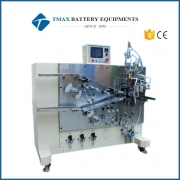 Automatic Cylinderical Battery Electrode Winding Machine
Read More
Automatic Cylinderical Battery Electrode Winding Machine
Read More
-
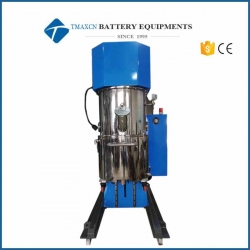 100-200L Double Planetary Vacuum Mixing Machine for Lithium Battery Slurry
Read More
100-200L Double Planetary Vacuum Mixing Machine for Lithium Battery Slurry
Read More
-
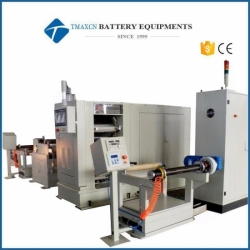 Large Heating Roller Press Machine Calender For Li ion Battery Production Line
Read More
Large Heating Roller Press Machine Calender For Li ion Battery Production Line
Read More
-
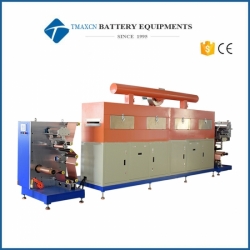 Large 3 Rollers Battery Electrode Film Intermittent Coating Machine for Pilot Production Line
Read More
Large 3 Rollers Battery Electrode Film Intermittent Coating Machine for Pilot Production Line
Read More
-
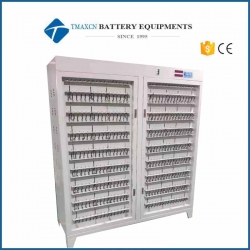 512 Channel 5V3A Battery Grading Machine/Battery Charge Discharge Machine Tester
Read More
512 Channel 5V3A Battery Grading Machine/Battery Charge Discharge Machine Tester
Read More
 ru
ru
 David@battery-equipments.com
David@battery-equipments.com

